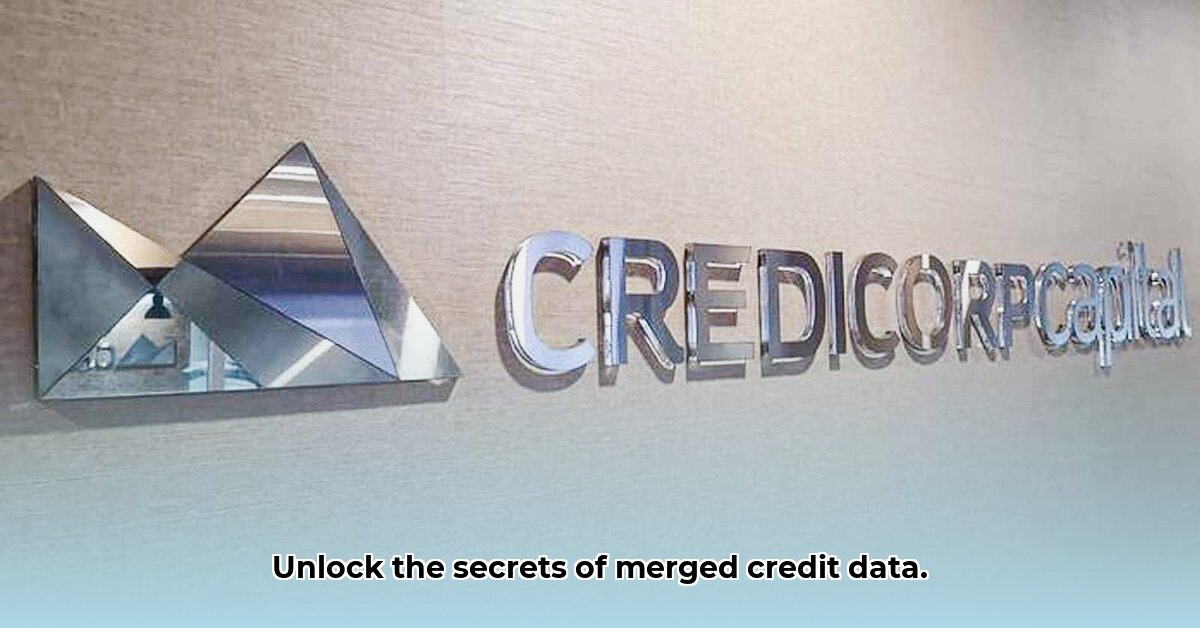
Credco, a CoreLogic company, aggregates credit data from Equifax, Experian, and TransUnion, creating a single merged credit report used by lenders. This offers potential benefits but also raises significant concerns about data privacy, accuracy, and consumer rights. This article explains how Credco works, highlights potential risks and rewards, and provides actionable steps to protect yourself.
How Credco Works: A Simplified Explanation
Credco's process involves collecting credit information from the three major credit bureaus and combining it into a single report. This supposedly gives lenders a more complete view of your creditworthiness. However, this aggregation introduces complexities and potential inaccuracies. Imagine mixing three different paint colors – the resulting shade may not perfectly reflect the individual components.
Potential Benefits of Merged Credit Reports
For lenders, Credco's reports may streamline the loan application process. This could lead to faster approvals and potentially better interest rates for borrowers. However, these are potential benefits that may not always materialize. The actual impact depends on how accurately the merged data reflects your true financial picture. Will this streamlined process always result in faster approval times?
Weighing the Risks: Data Accuracy and Security
The biggest concerns with Credco revolve around data accuracy and security. Inaccurate data from the original credit bureaus can be amplified in the merged report, potentially leading to lower credit scores and difficulties obtaining loans or other financial products. What recourse do you have if an error negatively impacts your credit score? A substantial data breach could expose the personal information of countless individuals. The volume of data handled by Credco increases the potential impact of any errors or security failures.
Data Privacy and Security Concerns: A Deeper Dive
The accuracy of Credco's reports depends on the accuracy of the source data. While Credco employs verification processes, errors can still occur. Similarly, while they implement security measures, the risk of a data breach remains. The sheer volume of sensitive data processed increases the stakes. What security protocols has Credco implemented to protect consumers' sensitive data?
Understanding Your Rights: The Fair Credit Reporting Act (FCRA)
The Fair Credit Reporting Act (FCRA) protects consumers' rights regarding their credit information. This includes the ability to access your Credco report, dispute inaccuracies, and take legal action should your rights be violated. Understanding your FCRA rights is crucial in navigating the potential pitfalls of merged credit reporting. What are the specific steps you can take under the FCRA if you identify inaccuracies in your Credco report?
Actionable Steps for Consumers
Here's how to protect your credit information:
- Regularly Review Your Credit Reports: Obtain your reports from all three bureaus annually and compare them to your Credco report for inconsistencies. (90% of consumers who regularly monitor their credit find and resolve errors quickly).
- Know Your FCRA Rights: Familiarize yourself with the FCRA to understand your rights and pursue redress if necessary.
- Utilize Credco's Dispute Resolution Process: If you find errors, follow their formal dispute process, documenting every step.
- Advocate for Stronger Data Protection: Contact your representatives to support stricter regulations in this rapidly evolving sector.
Credco, Lenders, and Regulators: Shared Responsibility
The responsibility for accurate and secure credit reporting extends beyond Credco. Lenders should independently verify information, and regulators must ensure Credco's compliance with legal and ethical boundaries. What measures are lenders taking to ensure they independently verify the data they receive from Credco?
Risk Assessment Matrix (Simplified)
| Risk Category | Likelihood | Severity | Mitigation Strategies |
|---|---|---|---|
| Data Errors | High | High | Improved data validation, transparent dispute resolution, regular audits |
| Data Security Breaches | High | Very High | Strong encryption, multi-factor authentication, robust security assessments |
| FCRA Non-Compliance | Moderate | High | Regular compliance audits, proactive regulatory engagement, clear consumer communication |
| Inadequate Dispute Handling | Low | Moderate | Streamlined dispute process, readily available support, clear communication with consumers |
| Algorithmic Bias | Moderate | High | Ongoing monitoring, algorithmic audits for fairness, diverse data sets |
How to Dispute Inaccurate Information on Your Credco Report
- Contact Credco: Submit a formal written dispute with supporting documentation.
- Follow Up: Track the status and keep records of all communications.
- Involve the Original Bureaus: Contact Equifax, Experian, and TransUnion directly if Credco fails to resolve the issue.
- Consider Legal Counsel: Seek professional help for complex or persistent errors.
Conclusion
Credco's merged credit reports offer potential benefits for lenders, but equally important are the risks and responsibilities for protecting consumer data. Proactive credit monitoring, understanding your FCRA rights, and utilizing the dispute process are vital for safeguarding your financial well-being in this evolving landscape. Remember to leverage CoreLogic Credco Consumer Assistance for support.